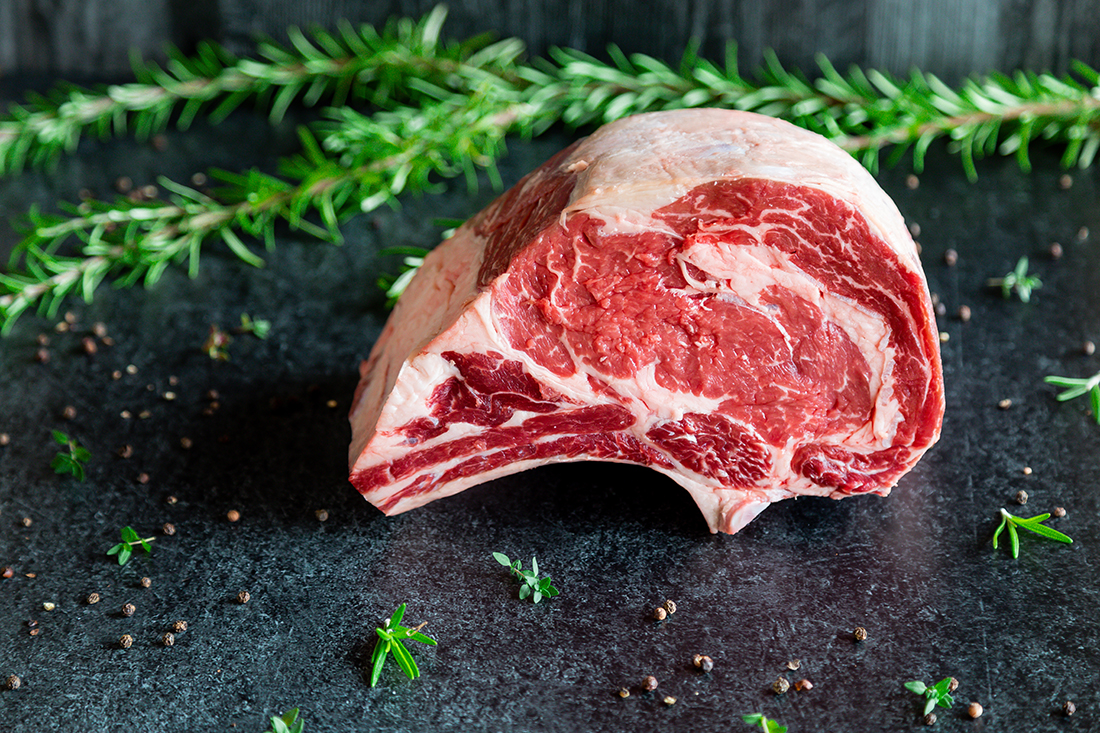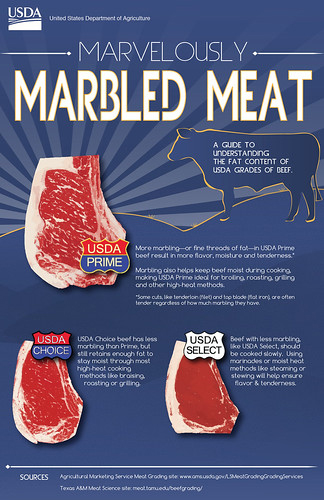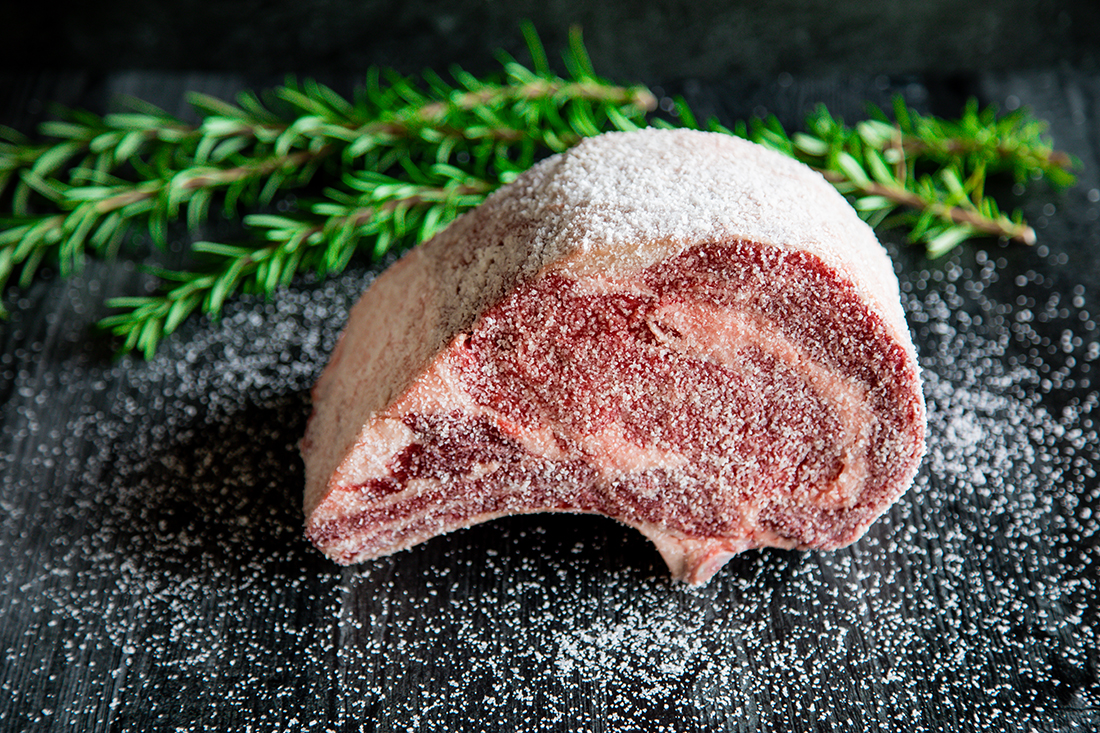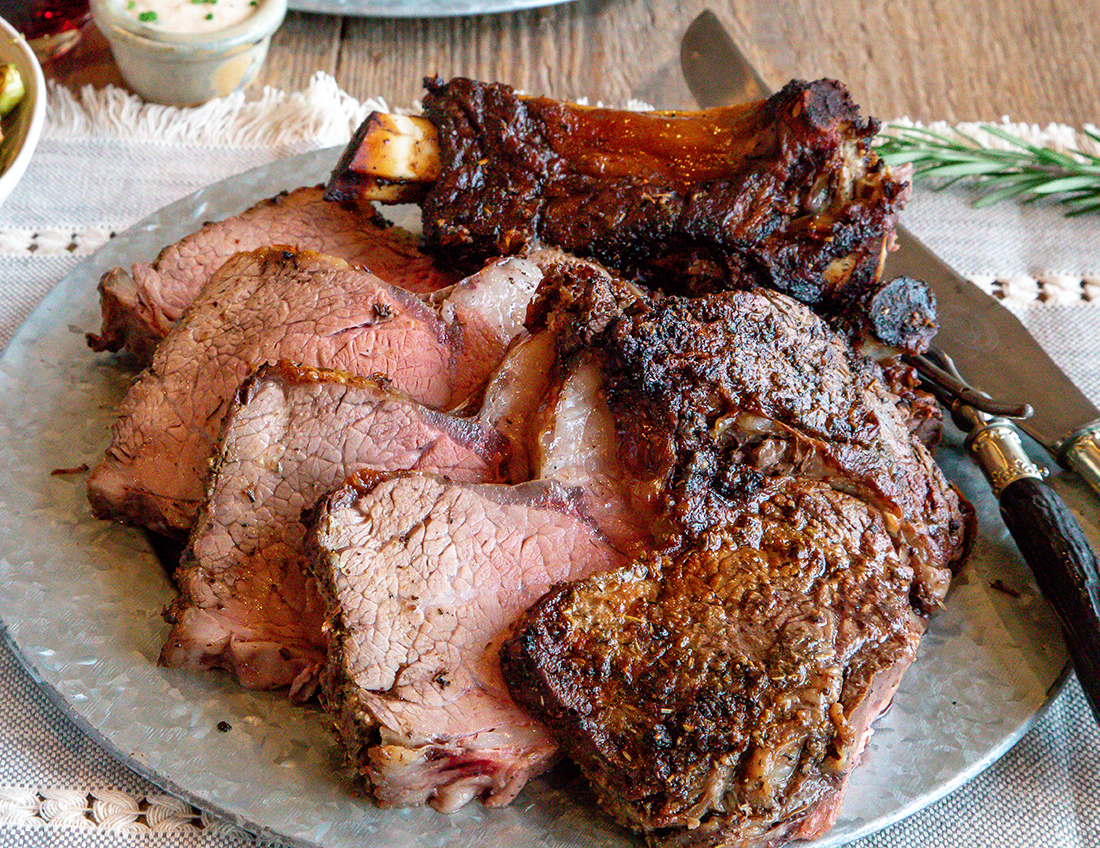A rib roast is one of the most tender, juicy cuts of beef you will ever eat. It has a bold, beefy flavor that doesnt need a lot of fussing to cook it to perfection. Cooked in your oven, this cut will be a crowd pleaser and something your guests will rave about for Holidays to come.
Choosing your Prime Rib Roast
Lets break down theassociatednames of this cut. First Prime rib describes the grade, other words like rib roast, eye of rib roast, and standing rib roast are all referring to the same cut.
- Rib roast bone-in
- Eye of rib roast- boneless
- Standing rib roast bone-n

Photo: Kate Dunbar
How Much Prime Rib Do You Need to Buy?
The beef rib roast is an expensive cut; however, it feeds many people. A traditional 3 bone standing rib roast weighs 6-8 pounds. When sliced thinly can easily feed up to 10 people. If you are looking to slice steak house cuts or thick cuts, you will easily feed 6-8 people. Its great for holiday meals.
How Is Beef Graded?
Lets talk about the USDA and how beef is graded. This grading sets the price per pound for all cuts of beef. The United States Department of Agriculture regulates the food industry in the U.S. from farming to wildlife, economic development and food. Specifically, the USDA presents grades for the quality of beef. According to their website, they break the quality grade down in this manner: tenderness, juiciness and flavor. To earn the grade: select, choice or prime, the amount of usable lean meat and the quality of marbling of fat within the lean meat is how the grade is given.

USDA
A trained inspector looks closely at the meats maturity of the fat marbling. The three main categories are Select, Choice and Prime. A side of beef with very little marbling receives the grade Select. The medium grade of marbling receives the label Choice. The coveted grade Prime, means the fat within the beef is evenly distributed and of high quality. Now that you know the grading levels, you can see why the cost of a 6-8 pound cut can be expensive, you are purchasing the top quality graded beef your butcher keeps in his case.
How Do You Season A Prime Rib?
One of the best lessons I have ever received was from Chef Samin Nosrat. She explained the use of salt with large beef cuts in her cookbook Salt, Fat, Acid, Heat and how necessary it was to pre-season them and allow a certain amount of time for that beef to dry age in your home refrigerator. Salt is a natural element found all over the world, from caverns deep underground to our oceans and even under lakes. The salt best used for the home dry-aging method is Kosher salt. The large flake size ensures it will stick to the outer layer of the beef and not over salt it. Using table salt would be a disaster, it is too salty, and its texture is too fine along with the fact it has iodine added, which would cause a very off-flavor.
To pre-season simply removing the rib roast from its package, sit it on a baking rack inside a baking sheet and liberally coat the entire surface with kosher salt. Then return it, uncovered to the refrigerator for 24 hours or up to 36 hours. This process will help draw out the beefs moisture, which will help concentrate the beefy flavor and help the fat render during cooking. In return, the salt is drawn down deep into the beef, which seasons the cut perfectly, it will not be overly salty, I promise. Once the aging process is finished, remove the beef and allow it to rest on the counter up to two hours before cooking. Then pat dry with paper towels and apply a butter and herb mixture. Simple as can be, thats all you have to do.

Photo: Kate Dunbar
How Do You Cook the Perfect Prime Rib?
Undercooked prime rib is overly soft, and the fat does not render, which means the rib roast will not develop its classic flavors. One of my greatest fears has always been overcooking or undercooking this cut. The outer ends of the roast will be shoe leather and the center will be rare as rare can be. The issue is that with a large cut of beef, there is a long cook time with the possibility of both drying out and undercooking is a serious concern. Cooking with a low and slow method is the key andwith a bit of reverse engineering.
Two years ago, I tried a few experiments with four rib roasts, yes four. Talk about a costly expense, but it was worth it. I learned how traditional methods my family had been using were not the best way to achieve that beautiful medium-rare slice. I turned to the BBQ community to see how they were cooking this cut and there I found the secret. Hot temps to start then low and slow temperature and cooking methods to finish. What happened was the outer layer released an enormous amount offat, whichslowlybastedthis cut throughout the cooking time. Then, with the lower temperature for cooking, the beef had time to relax and cook evenly, resulting in the perfect medium-rare temperature.
Cooking Methods Explained
Not everyone has the time or experience to cook a rib roast on the smoker or offset cooking method on the grill, so I have divided this section into easy follow cooking instructions for you.
- Oven Method: using a deep roasting pan, place the roasting rick inside of it. Add your seasoned-and rested rib roast in the pan on the rack, bone side down. Please do not add water to the bottom of the pan and do not cover it with foil.
- High-temperature Method: Pre-heat your oven to 500 degrees, once your oven is hot, place your beef in the roasting pan and place in the hot oven. Cook beef 6 minutes a pound at 500 degrees. Example: 5-pound roast at 6 minutes a pound equals 30 minutes. Then, without opening the oven door, turn off the oven and allow the beef to cook for an additional 2 hours. After 2 hours using a thermometer check the internal temperature, you are looking for 125 degrees F. If it is not at temp, turn the oven on to 350 degrees and cook for an additional 15 minutes. Remove the pan from the oven and place a piece of foil over the roast and allow it to rest for 15 minutes this rest time will allow the meats juices to settle back into the meat and the carryover heat will bring it to the perfect 130-135. Slice and serve.
- Low-temperature Method: Pre-heat your oven to 325 degrees F, place your beef in the roasting pan and cook for 16 minutes a pound. Example: 5-pound rib roast at 16 minutes per pound equals 80 minutes. Once your cook time is complete, using a thermometer, check the internal temperature. You are looking for 128 degrees. Remove the pan from the oven and place a piece of foil over the roast and allow it to rest for 15 minutes the carryover heat will raise the temperature to 130-135 degrees F. Slice and serve.
Sides and Sauces
Tradition says cream horseradish and AuJus are the only extras needed for this cut of beef. My favorite way to prepare horseradish is with sour cream, prepared horseradish, salt, pepper, and finely chopped chives. Mix it all up and allow the flavors to develop overnight in your refrigerator. For the Au Jus, while the rib roast is resting on a carving board, remove about cup of the rendered drippings from the roasting pan, 2 tablespoons of flour and 2 cups of low sodium beef broth. Add the rendered fat and drippings to a skillet and sprinkle in the flour, making a slurry, cook over medium heat until thickened. Add in the broth slowly while whisking continuously and cook until silky and smooth.

Photo: Kate Dunbar
Prime Rib Roast
5 6 lb standing rib roast, prime and bone-in
1 stick unsalted butter, softened
2 tbsp ground pepper
2 tbsp Kosher salt
1 tbsp granulated garlic
1 tsp dried thyme
1 tsp dried rosemary
Additional Kosher salt for dry brining
24-36 hours before cooking, take the prime rib out of the butcher paper or packaging. Place beef on a baking tray or disposable aluminum tray that will fit in your refrigerator. Pat dry with a paper towel. Liberally salt the cut of beef with kosher salt. Depending on the size, the amounts vary from cup to 1 cup. Make sure to rub the salt in with your hands. Place the salted prime rib in the refrigerator, uncovered for 24-36 hours.
Cooking Day
In a bowl, add softened unsalted butter, pepper, salt, garlic, thyme and rosemary. Mix well and set aside.
Remove beef from the refrigerator up to 2 hours before cooking.
Preheat the oven to 500 degrees F.
Just before you transfer the prime rib to the roasting rack and pan, dry the outside with a paper towel, removing any leftover salt.
Spread the butter mixture evenly over the beef, do not forget the sides or the bones.
Transfer to the baking rack.
Roast at 6 minutes a pound, then turn off the oven, let the roast continue to cook in the oven for 2 hours. Do not open the oven door.
After 2 hours, check the internal temperature, it should register 125 degrees F, if it is lower than 125 degrees, return the rib roast to the oven, close the door and heat oven to 350 degrees for 15 minutes. Remove the beef from the oven and allow to rest on a cutting board with a piece of foil lightly draped across the top for 10 minutes the internal temperature should reach 130-135 degrees for medium-rare.
Carefully with a very sharp knife remove the bones from the roast, this is best done when you stand the roast on its back with the ribs facing up. Just carefully carve the bones away in one section. You can split the bones into individual pieces after they are trimmed away.
Set the roast down and slice from end to end, the general rule is one index finger in width per slice.
The post Knives Out for Prime Rib on Your Holiday Travels appeared first on Good Sam Camping Blog.
